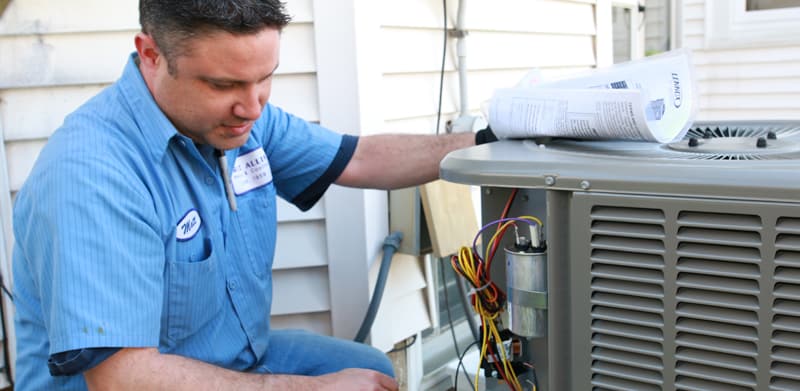When it pertains to making building spaces, the old stating 'type adheres to function' is true. Yet have you ever before considered exactly how incorporating cooling right into design can raise comfort and efficiency at the same time?
The smooth blend of cooling down systems within the framework of a structure not only impacts the passengers' wellness however likewise influences the general sustainability of the framework. As you check out the elaborate connection in between design and cooling, a world of innovative services and advanced technologies awaits your discovery.
Key Takeaways
- Energy-efficient systems improve comfort and sustainability.
- Integrated cooling enhances interior air high quality.
- Balancing looks and capability makes certain perfect layout.

- Future trends concentrate on clever, lasting cooling services.
Relevance of Integrated Air Conditioning
When designing areas, incorporating cooling is important for making certain the very best convenience and functionality. emergency ac repair Energy effectiveness plays a vital role in the design procedure, as it not only lowers operational prices yet likewise decreases the ecological influence of the building. By incorporating energy-efficient air conditioning systems, you can create a lasting and economical solution that profits both the owners and the world.
Additionally, indoor air high quality is an additional vital element to think about when making with integrated a/c. Proper air flow and purification systems help maintain a healthy interior environment by reducing pollutants and irritants. This brings about boosted passenger wellness and performance. When choosing air conditioning systems, prioritize those that offer innovative purification innovations to improve the overall indoor air quality.
Aspects Influencing Style Choices
Incorporating cooling right into architectural styles requires careful factor to consider of various variables that affect layout choices. When including air conditioning systems, sustainability considerations are essential to decrease the structure's environmental influence. User experience plays a considerable role in determining the performance and satisfaction with the a/c system.
- Power Performance: Lasting layout practices intend to reduce energy consumption, which not only benefits the environment but also minimizes operational expenses for the structure proprietor.
- Indoor Air Top Quality: Offering a comfy and healthy indoor setting improves the total individual experience, advertising efficiency and health.
- Aesthetics and Assimilation: Incorporating cooling systems seamlessly into the architectural design guarantees that functionality does not compromise the aesthetic charm of the area, boosting customer contentment and total building appearances.
Efficient Cooling Down Methods for Structures
To maximize cooling performance in structures, consider integrating passive layout techniques together with air conditioning systems. Easy cooling methods can substantially decrease the requirement for mechanical air conditioning, causing more sustainable solutions for maintaining comfortable interior temperatures. Style attributes such as shading devices, all-natural air flow systems, and thermal mass can aid manage temperature levels without relying solely on energy-intensive air conditioning. By purposefully placing windows to maximize cross ventilation or making use of reflective roof covering products to decrease solar heat gain, you can harness the power of nature to cool your structure successfully.
In addition to easy strategies, executing sustainable solutions like environment-friendly roofs or living wall surfaces can even more enhance cooling down efficiency by giving insulation and decreasing warm absorption. These functions not just assist in keeping comfy interior temperatures however additionally add to a greener setting. By incorporating passive air conditioning strategies with sustainable remedies, you can develop a more energy-efficient and environmentally friendly structure style that prioritizes both comfort and conservation.
Balancing Looks and Functionality

Take into consideration the harmonious assimilation of visual elements with functional facets in your building design to assure a balanced and impactful end result. When incorporating a/c systems into your building design, striking a balance in between looks and capability is key to creating areas that not only look good yet also supply optimal comfort for residents.
To achieve this equilibrium, maintain the complying with factors in mind:
- Mix the System with the Surroundings: See to it that the a/c units or vents seamlessly incorporate with the total aesthetic of the room, whether through concealed placement, attractive covers, or matching colors.
- Focus On User Experience: Style the airflow and temperature level control systems in a manner that prioritizes the comfort and wellness of the owners. Think about factors such as air distribution, noise degrees, and ease of usage to improve the general user experience.
- Include Sustainable Practices: Select energy-efficient cooling services that not just add to the aesthetic appeal of the structure yet also advertise sustainability and lower environmental influence.
Future Patterns in Architectural Air Conditioning
As you envision the future of building style, remaining abreast of emerging cooling fads comes to be critical for enhancing both kind and function within your projects.
The assimilation of smart modern technologies right into building air conditioning systems is readied to reinvent the way structures are cooled down. These systems utilize information and automation to maximize energy usage, giving personalized convenience while minimizing ecological influence.
Sustainable solutions are additionally forming the future of architectural cooling. From easy style strategies that take full advantage of all-natural air flow to ingenious air conditioning materials that lessen the requirement for standard air conditioning, sustainability is at the center of cooling advancements. Engineers are progressively including eco-friendly roof coverings, shielding aspects, and thermal mass into their designs to produce more energy-efficient air conditioning systems.
Often Asked Questions
Just How Does Cooling Effect the Overall Sustainability and Energy Efficiency of a Building Layout?
When you integrate air conditioning right into building style, it impacts sustainability and energy performance. Energy intake can rise because of a/c usage, impacting building performance. This raised power demand can have unfavorable environmental effects, lowering general sustainability.
To reduce these results, take into consideration incorporating energy-efficient cooling and heating systems, appropriate insulation, and passive air conditioning strategies. Balancing comfort with energy performance is very important for developing sustainable building layouts.
Are There Any Laws or Certifications That Architects Need to Think About When Integrating Air Conditioning Into Their Styles?
When incorporating cooling right into your layouts, it's critical to consider regulative needs like building regulations and accreditation standards for energy efficiency. Fulfilling these standards warranties that your job straightens with industry ideal practices and ecological goals.
Acquainting on your own with these policies will aid you in producing lasting styles that focus on convenience while additionally minimizing power consumption. Remain informed and compliant to provide projects that are both comfy and environmentally friendly.
Can the Positioning of Air Conditioning Units Influence the General Convenience and Performance of a Space?

When it involves cooling devices, placement matters a lot for your space's convenience and functionality. Air flow is vital, so stay clear of blocking vents or positioning units in dilemmas.
Think about just how environmental pollution can influence your setting and go for an aesthetically pleasing setup that blends flawlessly with your spatial format.
Focus on where you place these devices to assure maximum comfort and efficiency throughout your area.
What Are Some Ingenious Technologies or Materials That Can Be Utilized to Boost Cooling Solutions in Modern Design?
To improve air conditioning systems in modern architecture, you can discover smart controls and sustainable materials. Passive air conditioning strategies and making use of thermal mass are ingenious methods to boost performance and comfort.
Just How Can Architects Ensure That the Layout of Air Conditioning Solutions Complements the General Visual of a Structure While Still Focusing On Functionality and Convenience?
To guarantee the style of air conditioning systems matches a building's aesthetic, focus on aesthetic combination and layout consistency. Incorporate energy-efficient technologies for functionality. Stabilizing looks and capability improves passenger comfort.
Highlight seamless combination of air conditioning elements right into the architectural style. By concentrating on both aesthetic appeals and power efficiency, architects can create a space that's visually enticing, comfortable, and environmentally friendly.
Final thought

Generally, when creating with comfort in mind, integrating a/c in architecture is essential. By thinking about factors such as effective cooling strategies, balancing visual appeals and capability, and staying in advance of future patterns, engineers can develop spaces that aren't just visually attractive yet also comfy for residents.
It is necessary to focus on the health and convenience of those who'll be using the space, and integrated cooling plays an essential duty in accomplishing this objective.
